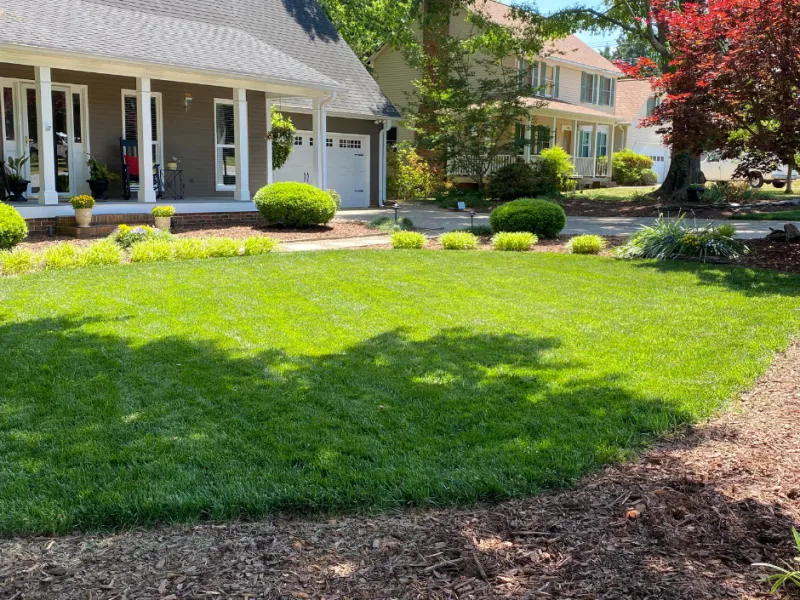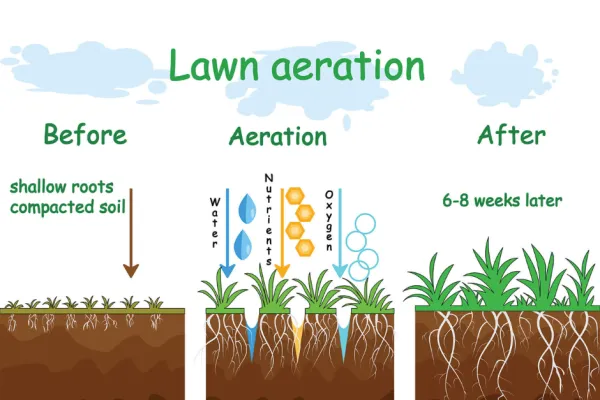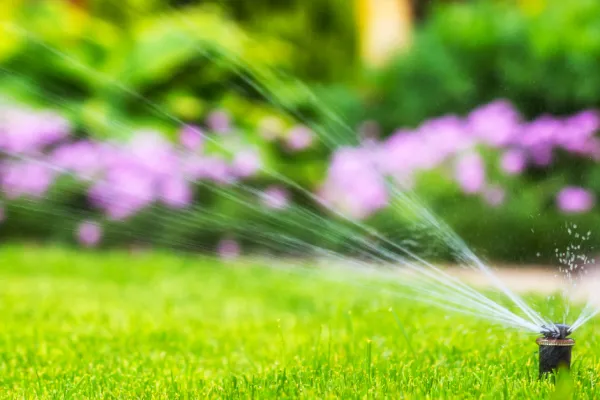Late-Summer Fescue Lawn Care

Late-Summer Fescue Lawn Care in the DMV
By the end of summer in D.C., Maryland, and Virginia, the weather is hot, humid, and rough on fescue grass. The good news? A few smart moves now set you up for a greener, thicker lawn all fall and next spring. Here's a simple plan you can follow.
What your lawn needs in late summer
Water: Your lawn requires 1-1.5 inches of water per week to thrive. Water deeply (slowly and thoroughly) 2-3 mornings a week so moisture reaches the roots.
Mow high—and sharp: Keep fescue at the taller end of 2.5-3.5 inches. Don't remove more than ⅓ of the blade, and keep your mower blade sharp to avoid frayed, brown tips. Dull blades can cause your grass blades to tear, making them more susceptible to fungus and disease.
Watch for disease: Warm nights and wet leaves invite problems like brown patch. Water at dawn, not at night, and pick up clumps after mowing.
Get ready to seed: Late August into September is prep time for core aeration & overseeding—the only way to thicken fescue in our region.
Why late summer care matters for fescue
Fescue is a clump-style grass. It doesn't "creep" to fill bare spots, so you need seed to rebuild thin areas each year. Aeration opens the soil, allowing air, water, and nutrients to reach the roots; overseeding drops fresh seed right where it can sprout.
Best time for core aeration and seeding in the Mid-Atlantic: Fall is the optimal window to aerate your lawn and plant fescue seed—cooler nights and warm soil help roots grow fast before winter.
After overseeding: Keep the top ½ inch of soil moist.
Days 1-10: 2-3 light waterings/day (5-10 min).
Days 11-21: 1 light watering/day.
After the first mow: shift to deeper, less frequent watering.
Our fescue lawn care program combines fertilization and weed control, with spot treatments every visit. We provide seven treatments a year, plus free retreatments if needed, so your lawn stays healthy and on track.
We also offer grub control with a single, well-timed treatment that protects all season long. Additionally, we offer disease control to address issues such as brown patch, dollar spot, or pythium that may arise during the summer heat.
Ready for thicker, greener fescue this fall?
Book your lawn's core aeration and overseeding, and join our seven-step lawn program now to take advantage of the best lawn care program. If you have questions—or want a free quote—reach out, and our local team will help you map the next steps.
P.S. We're local. Our technicians work on lawns across Northern Virginia, Maryland, and D.C., so your plan is tailored to our climate, soils, and seasons.
Lawn Care FAQs
1. "Is it too hot to seed now?" - Seedbed prep starts now; actual seeding is best mid-September through mid-October in the DMV.
2. "My lawn thins every summer—why?" - Heat, humidity, and traffic stress fescue. Because it's clump-forming, it won't spread to fill gaps—you need annual overseeding to rebuild density.
3. "How often should I water?" - Total 1-1.5" per week, in 2-3 deep, morning sessions. After seeding, keep the surface moist with short, gentle cycles until the first mow.
4. "How high should I mow my grass?" - Keep it around 2.5-3.5 inches; taller blades shade the soil and help roots during heat.


